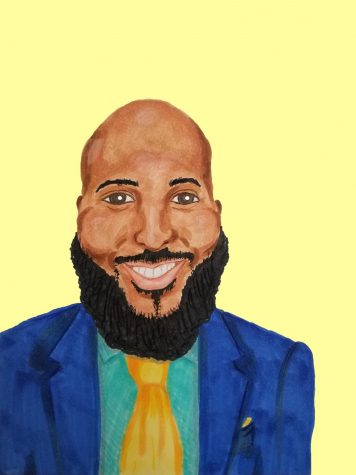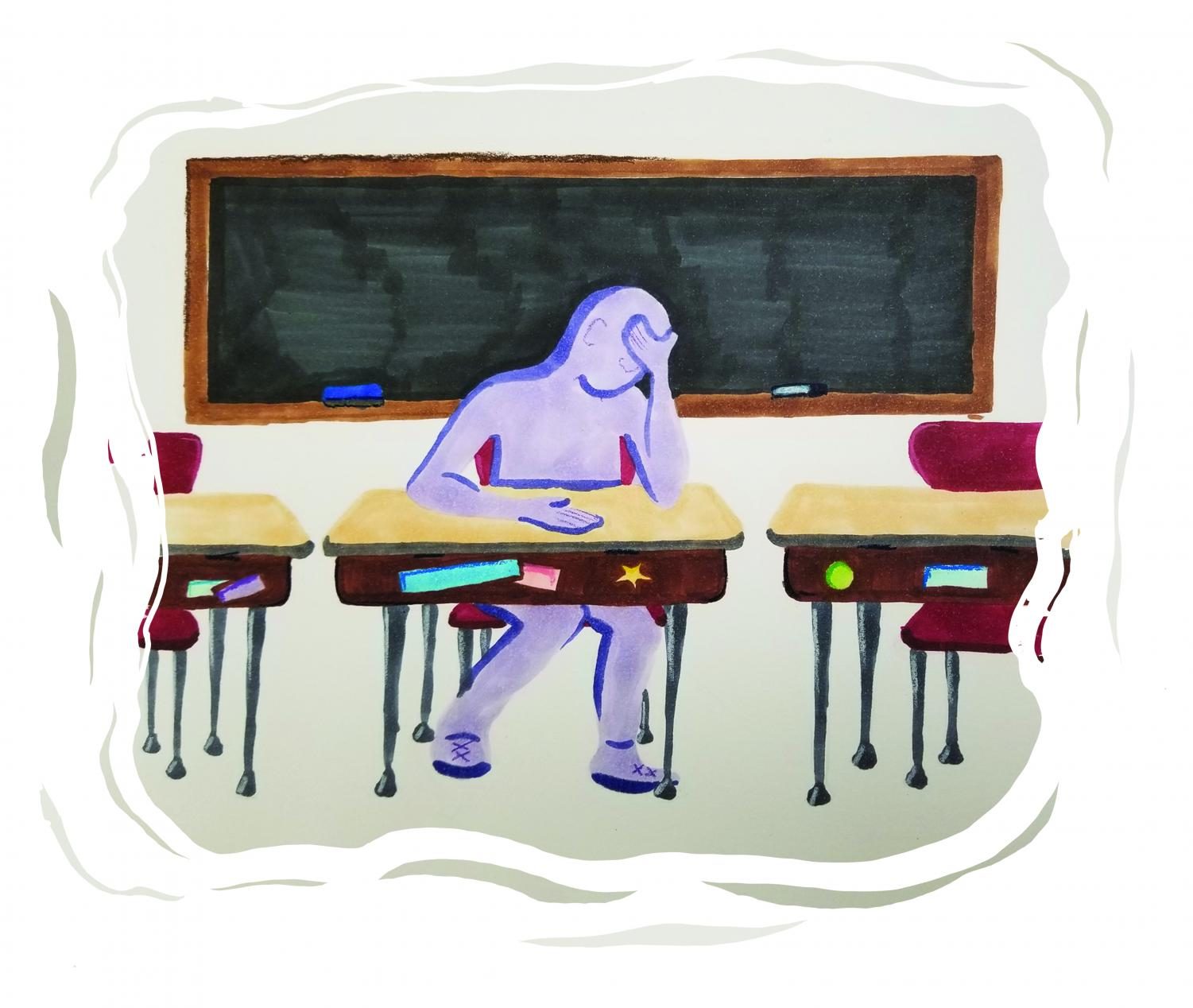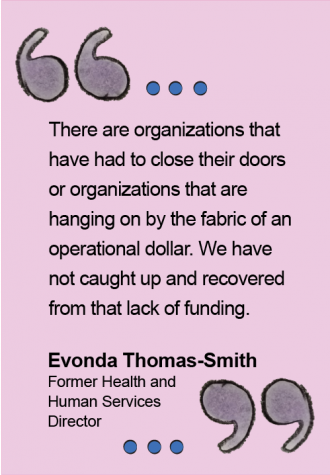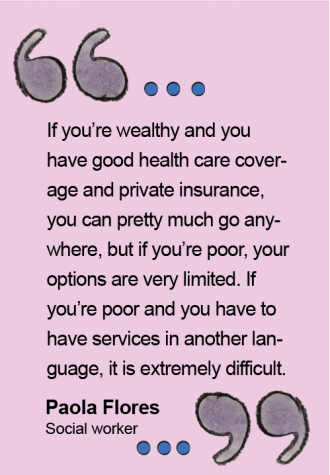In Focus: As student mental health concerns rise, parents and social workers worry District 65 services aren’t equitable
May 31, 2019
Margaret Rothe has met with children from almost every elementary and middle school in Evanston during her 25 years as a social worker in Evanston/Skokie School District 65.
By now, she’s working with the second or third generation of the same families, who are reporting similar mental health problems, which she said is indicative of a pattern of inadequate services. And over the past few years, something has changed — but for the worse.
“The numbers of mental illness are the highest I’ve ever seen,” Rothe told The Daily last May, “whether it’s stress, anxiety, PTSD. The amount of need is greater. I’ve had some of those kids and I’ve had their parents through the same program. The problem is getting bigger, not smaller.”
Rothe is not alone in noticing a pattern of mental health concerns among children and adolescents in Evanston’s public school system. District social workers, including Rothe, approached the city’s Mental Health Board a year ago to discuss high levels of inequity in acquiring care. During the meeting, members of the board said they were “blown away” by student hospitalization rates and had “no idea” the problem was getting worse.
Ever since, many city officials and school employees have said the district’s awareness of student concerns has increased, but the response is still lacking: More and more students are expressing signs of poor mental health.
One of the biggest problems is figuring out how to support them all — especially when a student who needs help faces systemic barriers, including their socioeconomic status, language differences and a lack of good insurance.
A national and local issue
According to the National Institute of Mental Health, an estimated 3.2 million adolescents — or 13.3 percent of Americans in this demographic — have had at least one major depressive episode in the past year.
Suicide is the third leading cause of death for people aged 15-34 in Illinois and the third leading cause of death for people aged 10-24 in the nation. Emergency departments across the country treat about 157,000 people in the latter age range annually for self-inflicted injuries.
According to the most recent Evanston Project for Local Assessment Needs report, 8.3 percent of local teens aged 12-17 experienced a major depressive episode in 2008. The city does not collect data on either suicide or hospitalization rates for young people with mental health problems.
District officials say many students report a variety of mental health conditions such as anxiety, depression, PTSD, suicidal ideation, attachment disorders and other disorders that require emotional and occupational therapy.
Michael Edwards, a special services supervisor for District 65, said diagnosing a child is a case-by-case process. Often, he said, teachers, families or even friends of a student who is having problems will come to him to report concerning behavior.
Edwards said he can meet with students up to five times without notifying parents or guardians — though he clarified family awareness of a problem is not necessarily “a bad thing.” After that limit is reached, Edwards said he — like other district social workers — must receive consent from guardians to continue meeting with the child or refer them to outside social service groups in case their need exceeds what a school can offer.
If a crisis arises, the school can send the student to the hospital or emergency services — but many said that may present challenges for families without documentation or insurance. District employees would be involved in the whole process, Edwards said, whether it means riding in the ambulance or waiting in the emergency room. They also follow up with families afterward.
After being released from emergency services, children may get 90 days of medicated service, Rothe said, but they have to find a psychiatrist for a follow-up appointment, which can prove to be challenging for a variety of reasons, from cost to insurance to time. If they don’t check in with a therapist or psychiatrist after hospitalization, they may end up needing emergency services again.
When the problem grows beyond what the 25 social workers employed by District 65 can accommodate, they try to refer students to a variety of nonprofit agencies in Evanston, like The Family Institute, Metropolitan Family Services and Trilogy. However, families seeking help from organizations like these can sometimes encounter long wait times or inadequate services, especially when the agencies don’t have the funding to support a growing problem.
Top-down funding problems
Joyce Bartz, the assistant superintendent of special services for District 65, said there are many staff members committed to providing the “best support” possible for struggling students. She said there are plans designed to address behavior and social issues, and assist families in finding resources they need.
“All students have access to mental health services depending upon their need and/or the severity of their situation or what they might require,” Bartz said.
Despite those intentions, some families say this system does not always serve every student well. An Evanston parent said she learned her son faced problems socializing when he was in kindergarten, and his teacher suggested he receive occupational therapy. The Daily is not identifying her for privacy reasons.
The mother said she asked if the district could cover the cost through special services. But since her son’s struggles were social, not academic, she said she was told to go outside the school district, which could have led to her paying out-of-pocket because her insurance didn’t cover her child’s needs.
After her son struggled for a year, she approached his first-grade teacher during parent-teacher conferences to discuss his challenges. Only after that faculty member advocated for her son was he able to get help from a school social worker.
“He immediately started going to the social worker and… he goes, like, twice a week now,” she said. “It’s helped him a lot. But if it weren’t for that teacher, we would still be struggling.”
Students’ challenges were only exacerbated when the state faced a budget crisis.
Following the 2014 election of Republican Gov. Bruce Rauner, Illinois lacked a state budget for two years. Many agencies that received state funding had to close their doors. At the time, tens of thousands of Illinois residents lost access to mental health care.
The cuts trickled down to Evanston.
“There are organizations that have had to close their doors or organizations that are hanging on by the fabric of an operational dollar,” said Evonda Thomas-Smith, the city’s former health and human services director. “We have not caught up and recovered from that lack of funding.”
Thomas-Smith described a ripple effect from the budget crisis: For example, when a service provider’s reimbursement is delayed six months, it affects all operations, which leads to decreased access and availability for new patients. With a growing city population, demand stays high while the amount of services diminishes — and that leads to nonprofits closing because they can’t keep up. While those agencies try to work around deficits, she said, many marginalized communities in Evanston don’t receive help.
“The demand is still there… and I think we have maximized and become as lean as we possibly can,” Thomas-Smith said. “When nonprofit A closes their doors, (it) impacts nonprofit B, because nonprofit B who’s left standing is expected to pick up the excess — and providers cannot do that.”
Low-income barriers
The ripple effect has not impacted all of Evanston’s communities equally. When it comes to cost and available insurance benefits, many low-income households have experienced inequities while seeking out mental health care.

Evonda Thomas-Smith, former Health and Human Services Director.
Jennifer Bergner, a social worker at Oakton Elementary School, said part of her job includes advocating for children and families in her school district. Although Evanston is resource-rich, there are still inequities in access, including for mental health care.
She said many barriers exist to obtaining help, including long waiting lists, limited insurance and a lack of provider choice, which can be especially challenging.
“I always tell people it’s best practice to choose a therapist that you feel comfortable with,” Bergner said. “But when you’re not provided options or you go back on another long waiting list, you almost feel like you have to take what you’re given, just because you don’t have the right insurance or you don’t have the money to pay cash.”
Bergner said options like Medicaid, state-provided insurance or an HMO plan can limit the quality of care future clients can attain. To receive care that’s in-network, families often have to leave Evanston for offices in Chicago or surrounding suburbs like Highland Park, Schaumburg and Hoffman Estates.
“It creates this cycle of in and outpatient therapies,” Thomas-Smith said, “and we really have a lack of outpatient therapies for low-income families. It just really fragments an already fragmented system.”
Angela Allyn’s three children attended District 65 and District 202 schools, and her youngest is about to graduate from Evanston Township High School. She said she was privileged as a parent who could navigate her way through statutes and even afford legal help when necessary.
“I understand when they’re doing something that’s not legal,” Allyn said. “The entire time I was going through this, I knew other kids who may have had similar struggles or worse.”
She said having health insurance benefited her children during their search for outside treatment, an inaccessible option for many in Evanston. Through her coverage, she said she could “scrape together” funds for a neurological psych evaluation for her child.
Facilities that lie far away from Evanston can cost less and accept a wider range of insurance, but might offer limited services as a result. Bergner said that can mean children and teenagers might have to meet with an intern or graduate student who doesn’t have a lot of experience in handling complex cases, even if they’re being supervised by an experienced professional.
This could lead to inadequate care.
The limitations under Medicaid, the single largest payer for mental health services in the United States, affect the treatments families can receive. Like all states, Illinois is required to provide benefits like inpatient and outpatient hospital services under federal law. The insurance plan also covers services that fall under Early and Periodic Screening, Diagnostic, and Treatment, a benefit that provides health care for children under 21, including mental health screenings.
Under Group A services for individuals, mental health assessments, psychological evaluations and treatment plan developments at all ages can be obtained — at a time limit of a quarter of an hour.
However, the gap in the level of care someone would receive in 15 minutes, rather than a longer period of time covered by private insurance, is drastic, Bergner said. A therapist would likely not be able to understand a patient’s mental health history within that amount of time, leading to a potential misdiagnosis, she said.
“Doctors are given only certain amounts of time to be paid for,” Bergner said. “You could be a great child psychiatrist, (but) in a half an hour appointment, you’re not going to be able to conduct a really good history to be able to make an accurate diagnosis.”
Language and culture barriers
Beyond issues of income inequality, many residents face a language barrier. Students in District 65 collectively speak 62 languages, and among them, 13 percent are identified as English language learners.
Bartz said even though a “broad array” of languages exists throughout the city, that diversity isn’t similarly represented in the district’s staff. When students who don’t have strong English skills come to district social workers with significant concerns and traumas, it may be difficult for both parties to communicate fully.

Natalia Moreno Polomarkakis, bilingual social worker at District 65.
Despite the myriad languages spoken in schools across Evanston, there are very few measures in place to support those who do not speak English fluently.
Natalia Moreno Polomarkakis, a District 65 social worker, said she sees a disparity in access to mental health services in the city. A Spanish speaker, she is one of the district’s few bilingual social workers.
Some Evanston organizations, like The Family Institute, charge for services on a sliding scale and are potentially more affordable. Unfortunately, they don’t have more than one or two Spanish-speaking clinicians on staff, Moreno Polomarkakis said. This becomes a problem, she added, especially when families are dealing with issues like family separation or deportation.
In interviews with The Daily, many social workers noted that even fewer of their district colleagues speak languages like Haitian Creole or Arabic — to the detriment of students and their families.
Some households that don’t speak fluent English have come to Evanston from other cultures and communities outside the U.S. as immigrants or refugees. Thomas-Smith said she has noticed some children from those families display behavioral and anti-social tendencies — students as young as three years old — but no programming exists for that demographic.
Because of these cultural differences, she said many families aren’t used to Western methods for addressing mental health concerns like therapy. Thus, they can often be unfamiliar with the type of help their children need.
Transitioning to a new environment and culture while adjusting to a loss of familiarity means adults may also struggle with their own problems, Thomas-Smith said, allowing children’s concerns to be lost. Edwards said he himself has noticed a discrepancy in the number of refugee families open to therapy because of surrounding stigmas.
The city started a Refugee Task Force in 2016 to help new families get resources and financial support for 90 days after they arrive. Members belonging to different resettlement and city agencies work to assist refugee households in adjusting to American life, including finding medical and social services. According to the task force’s initial findings in February 2017, approximately 100 “legal refugee students” were enrolled in Evanston schools, though there could be more living in the city without legal status.
However, once three months are complete, many households can find it hard to navigate the complex mental health service system in the city.
“The expectation is that the families would be self-sustaining and some of them are really struggling to find access to services they need,” Thomas-Smith said. “Once the 90 days is up, they’re kind of on their own.”
The overlap of obstacles
Many families that face these language and cultural barriers are also considered low-income, which makes finding adequate and affordable care in Evanston very difficult.
Paola Flores, a bilingual social worker at Chute Middle School, said most of the students she works with do not get mental health care in Evanston because affordable, Spanish-speaking services are “pretty close to nonexistent.”
“There’s one or two providers and they are full right now,” Flores told The Daily last May. “If you’re wealthy and you have good health care coverage and private insurance, you can pretty much go anywhere, but if you’re poor, your options are very limited. If you’re poor and you have to have services in another language, it is extremely difficult.”
She said this puts undue stress on families: Parents who have a child in crisis and in pain want to get the best care, but wait times can be insurmountable — especially for her clients at Chute who speak Spanish, Haitian Creole or Arabic. Finding services then becomes more difficult, not only for children, but for their families. It’s often complicated to explain intake processes and insurance forms — parents may need someone to describe the process in their native language.
She said she saw no difference between the mental health needs of Latinx students, for instance, and those who are not, but the disparity becomes more apparent since many materials aren’t translated.
Along with socioeconomic status, lack of fluency in English and cultural differences, families face yet another barrier — long wait times. The more accessible agencies in Evanston are often overwhelmed with new clients, sometimes leading to months-long appointment waitlists.
Flores said this lack of immediacy limits the options within Evanston and the surrounding area significantly, especially for those who don’t speak fluent English.
“In some places,” she said, “they don’t even want to put your name on the waiting list because there’s just such a backlog for those places that do take (your insurance) and have Spanish-speaking services.”
But the clinics have two waitlists — one, she said, for an intake session and another for actually meeting with a therapist. The process becomes even more difficult if you speak another language — if a clinic only has one Spanish speaker, for example, a family could be put on hold for months.
Evanston resident Sofía Santos’ teenage daughter had depression and suicidal thoughts during her time at a District 65 middle school. However, Santos said her child was not able to get help within a reasonable timeframe. Like many, she was put on a waitlist for care. Santos said she wishes there was more consideration for cases like her daughter’s that happen “daily.”
“They give you a long waitlist, over a month, and in a month, lots of things can happen,” Santos told The Daily in Spanish. “The person can commit suicide because they are serious problems, and there’s no prompt response to them.”
Santos said her daughter needed a therapist with a lot of experience, but she never got that help. The situation grew so bad, Santos said her child had to leave Evanston to live in Mexico. Although she tried to seek professional help, Santos said the process was difficult — agency workers didn’t answer the phone or return her messages promptly, which was “dangerous.”
While three years have passed since her daughter left the city, Santos remains frustrated with the lack of accessible quality care. Though her daughter is bilingual, Santos wishes there were services available in Spanish for her to better understand the therapeutic process as a parent.
“I also would have liked to help her and understand what the therapist wanted to do with her,” Santos said in Spanish. “My daughter’s problem was mine, my husband’s, my children’s. It was a family problem.”
Next steps
The lack of access to quality and affordable services is difficult to improve in a short amount of time. However, residents and city officials have started taking some tangible steps to address the problem.
Within the city’s EPLAN report, officials surveyed approximately 200 community leaders. Their top health priority was addressing mental health concerns. In addition, another survey in the report showed 43.4 percent of respondents said mental health issues — the top answer — were the most important problems affecting quality of life in Evanston.
The action plan put forward a goal of decreasing the 8.3 percent of people aged 12-17 who experienced a major depressive episode in 2008 to 7.5 percent by 2020. One intervention strategy listed was training city employees in Mental Health First Aid to better serve those experiencing mental health crises. Another was partnering with the Mental Health Board to facilitate data collection and resource guides.
Last November, the Mental Health Board was allocated a budget of $736,373 for the current fiscal year. The city’s proposal initially suggested a quarter-million dollar cut in funding, which was not included in the approved budget. During their meeting, board members assigned points to city agencies based on assessments of things like diverse reach for organizations that applied for funding, and allocated money accordingly.
The Mental Health Board works with the city directly, rather than the school districts, said Jessica Wingader, the city’s grants and compliance specialist. Because of this separation, she said the most the board can do in terms of fixing District 65 and District 202 inequities is fund nonprofit agencies such as Metropolitan Family Services or Trilogy.
While school districts have examined disparities in mental health care, particularly between children of color and white children, Flores said Evanston tends to limit the focus to differences between black and white residents. Oftentimes, she said that leaves out Latinx experiences.
Organizations such as Evanston Latinos and Evanston CASE have held community discussions surrounding family rights when it comes to getting accessible mental health services.
In addition, families can band together to help each other navigate the complex mental health system. Through Facebook groups like Evanston CASE’s, parents ask each other for resources — some even attend meetings with fellow parents who don’t understand complicated proceedings like the IEP process, Allyn said.
Health agencies like The Family Institute at Northwestern operate on a sliding scale, aiming to serve as an affordable option. The Institute has an affordable counseling program staffed by Northwestern graduate students training to become therapists. A session with one of them can cost as little as $5 and does not require any type of insurance.
Though the clinic’s goal is outreach to “underserved populations, including racial ethnic minorities and lesbian, gay, bisexual and transgender individuals,” chances are, patients will likely see therapists from a homogeneous group: white women.
The low availability of diverse, bilingual or bicultural students who are therapists-in-training persists every year. For marginalized District 65 and District 202 students, this lack of diversity impacts every level of care — from not receiving nuanced understanding from their therapist, to increasing wait times for affordable or multilingual clinicians.

Michael Edwards, special services supervisor for District 65.
Edwards said he was one of the few black men in both his undergraduate psychology and graduate social work programs. In a field overrepresented with white women, there is a systemic problem that he said starts with the lack of recruitment of bilingual students, people of color, immigrants and other marginalized individuals.
Of the 496 students studying subjects in Social and Behavioral Sciences in The Graduate School last fall, 83 percent were women, while just 30 percent identified as American Indian, Black, Hispanic or Pacific Islander. Only 3 percent identified as international students.
And ultimately, Edwards said that disparity creates a lack of a pipeline into the industry.
“You say you want to hire teachers of color or educators of color,” he said. “You’re going to have a hard time going to those grant programs and undergraduate programs and finding people of color who even go to college to do that.”
Parents like Allyn think more comprehensive mental health resources would also be crucial for students. She said she would want a clinical therapist on staff with whom students could sign up to have individual sessions during the school day, although she doesn’t know what that might look like in practice. Allyn also said she wished the process to receive special services were less “adversarial.”
Many community members, district workers and city officials have identified Evanston residents’ limited access to mental health as a problem to be solved. However, the city is at a standstill with how to proceed — now that issues have been named, more tangible solutions have yet to be addressed at the district level.
While parent organizations and the groups like the Mental Health Board work to fix individual problems, students — especially marginalized ones — are still struggling daily in school.
“I look at the services that these kids get — our black and brown kids get — (and they) are really subpar,” Rothe said. “I feel really scared some days to go to work because sometimes the only mental health services they get are the people that I can (send to the hospital).”
Samantha Handler contributed reporting.
Email: [email protected]
Twitter: @mar1ssamart1nez




